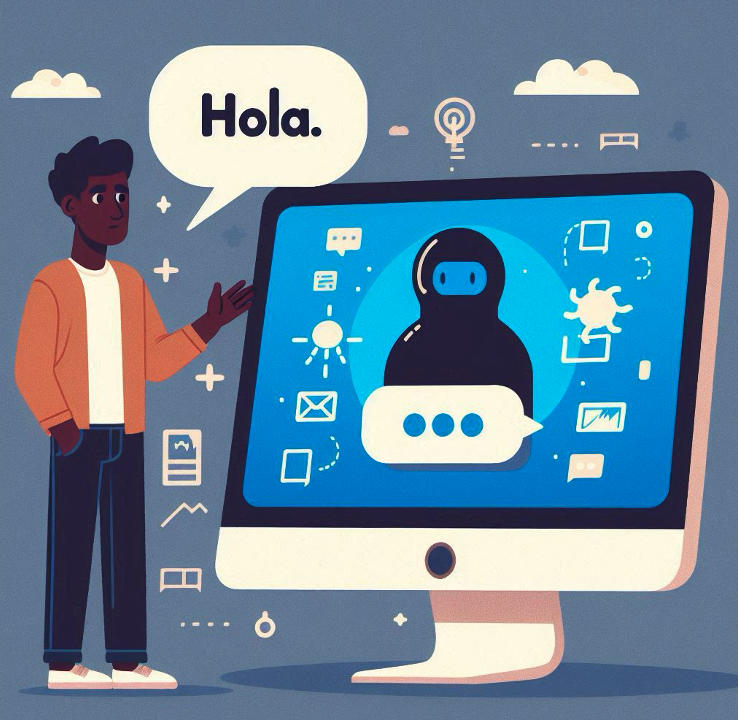 Center for Instructional Technology and Training
Center for Instructional Technology and Training

Discourse about AI in teaching and learning feels a little bit like a tidal wave these days: You can either get swept up in the excitement or retreat to dry land but get left behind. But it doesn’t have to be that way. If you want to test the waters but don’t know where to begin, you can dip your toes in by designing assignments that use AI but don’t require it to go swimmingly every time.
A faculty member and I have been working on a series of assignments for a Spanish language course that utilizes AI to encourage reflection and promote metalinguistic skills in her students. When Dr. Jen Wooten initially came to me for assistance with her SPN 1130 and SPN 1131 Beginning Spanish courses, she knew she wanted to explore the potential for AI and language learning. Both of us started by approaching it as an opportunity for more conversation practice with immediate feedback. We experimented with both verbal and text chats with different tools, but we found that our results were inconsistent. Some of the feedback was helpful and accurate, but there were gaps and inaccuracies that concerned us; furthermore, we struggled to effectively get the chatbots to switch between conversations in Spanish and giving feedback in English. It seemed impossible to plan for a smooth experience for the students without asking them to invest in expensive subscriptions.
So we regrouped. We realized there was a way to make these small speed bumps work for us instead of against us. First, we removed the stress of finding the perfect AI tool by allowing students flexibility. We provided several suggestions they could choose from, and they were encouraged to alternate between them. We made sure that students knew these assignments were low stakes and meant to help them practice both their Spanish skills and their use of AI in language learning.
Dr. Wooten still asks her students to engage in targeted conversational practice with chatbots every other week, but she does not grade students based on the content of their chat history. Instead, students attach their transcripts to an online form and answer a brief series of questions about them. These questions ask students to reflect on the conversation and analyze errors or eccentricities in their own language use or in the technology. My favorite question asks them whether using speech to text led to any words they did not intend and, if so, do they think their pronunciation was unintelligible or do they believe that the technology was simply in error.
This assignment structure encourages students to think critically about how they are using Spanish and encourages them to edit and evaluate their own work instead of asking the chatbot to do it. It also gives them an opportunity to think about how they use AI tools and explore the strengths and weaknesses of the technology.
By giving yourself permission to create assignments that are slightly messy and inconsistent (and communicating to students that that’s okay), you can experiment with adding these tools to your teaching practice without the pressure of that tall wave bearing down on you.
Image Credit: Image creator in Bing
Tags: Active Learning, Assessments, Course Design, Education Technology, Engagement, Feedback, Instructional Design, Learning, Online Teaching, Pedagogy, Student Success, Teaching, Technology